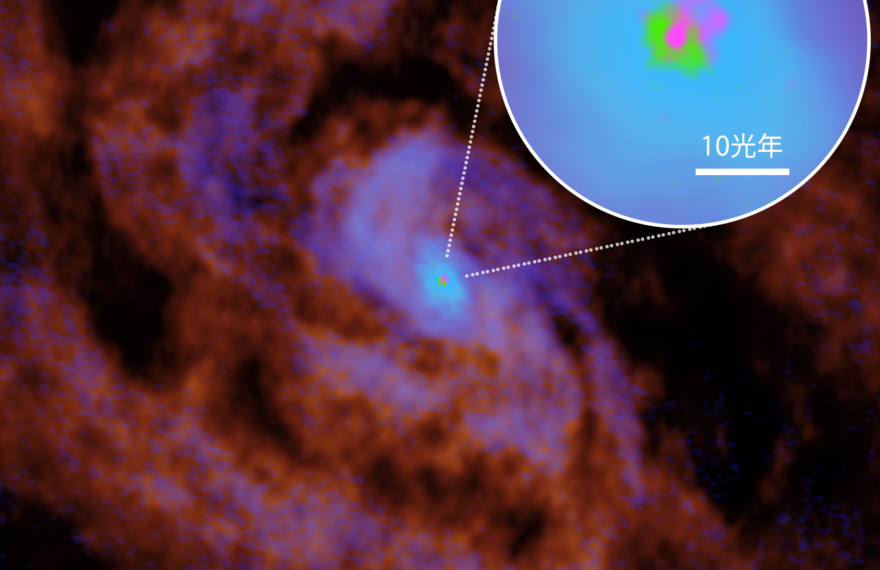[Press Release]
Finally Unraveled! Growth Mechanism of Supermassive Black Holes and Material Circulation in the Galactic Center

Joint Press Release
Kotaro Kono, Professor, Astronomy Education and Research Center)
An international research team led by Assistant Professor Takuma Izumi of the National Astronomical Observatory of Japan (NAOJ) has observed the Compass Galaxy in the nearby universe with the ALMA telescope at an extremely high resolution of about one light year, and succeeded in quantitatively measuring the gas flow and its structure on a spatial scale of only a few light years around a supermassive black hole in all phases: plasma, atomic and molecular. The result was the world’s first successful quantitative measurement of the gas flow and its structure in all phases of plasma, atoms, and molecules. As a result, the accretion flow toward the supermassive black hole was clearly observed, and it was also clarified that the accretion flow is caused by a physical mechanism called “gravitational instability”. Furthermore, it was found that the majority of the accretion flow is not used for the growth of the black hole, but is instead ejected as atomic or molecular gas from the vicinity of the black hole, and then returns to the gas disk to become accretion flow to the black hole again, as if a fountain-like gas cycle is taking place. This is an important achievement toward a comprehensive understanding of the growth mechanism of supermassive black holes.
These observation results were published in the American journal Science on November 3, 2023 as “Supermassive black hole feeding and feedback observed on sub-parsec scales” by Izumi et al. (DOI: 10.1126/science.adf0569).
Professor Kotaro Kono of the Center for Astronomy Education and Research is participating in this research.
For more information, please visit the website of NAOJ and NAOJ ALMA Project.
https://www.nao.ac.jp/news/science/2023/20231103-alma.html

